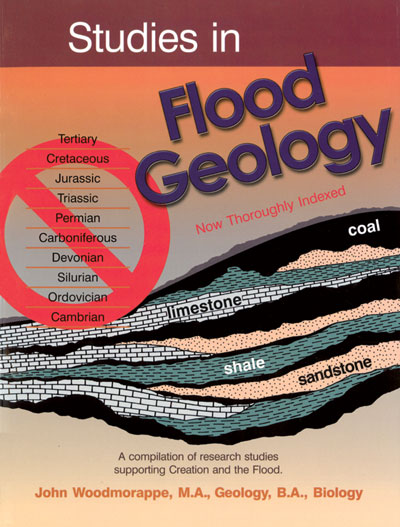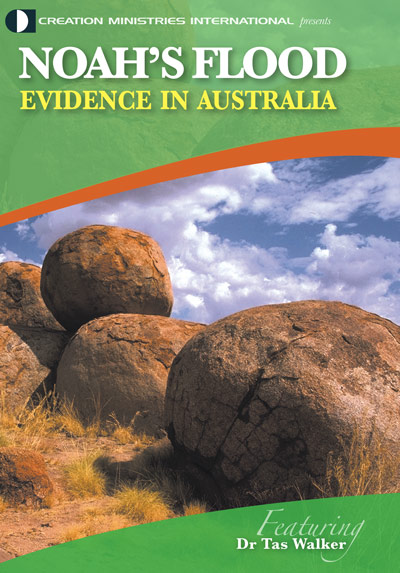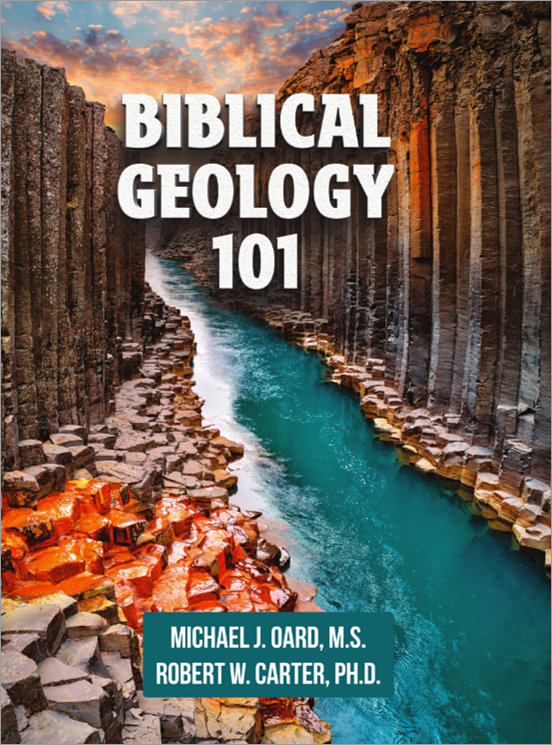Journal of Creation 37(3):3–6, December 2023
Browse our latest digital issue Subscribe
Resolving the Archean Belts in the context of Noah’s Flood
Earth’s continents are a patchwork of many different types of geologic materials—sedimentary, metamorphic, and igneous. In many places, similar rocks are grouped and defined collectively. The rocks of the Archean are no exception:
“Archean cratons [protocontinents] expose two broad groups of rocks that are distinguished on the basis of their metamorphic grade: greenstone belts and high grade gneiss terrains. Both groups are intruded by large volumes of granitoids. Together these rocks form the Archean granite-greenstone belts.”1
Secular uniformitarian workers claim that Archean granite-greenstone belts are the oldest exposed rocks on Earth, ranging between 4.0 and 2.5 Ga in age,2 and are believed to have formed the first continents.1 Geologically, they are defined as:
“A large area of exposed basement rocks in a craton [continent], commonly with a very gently convex surface, surrounded by sediment-covered platforms. … The rocks of virtually all shield areas are Precambrian.”3
Possible origins
Two young-Earth creationist interpretations have been offered to explain the many Archean belts exposed on Earth’s continents. The first assigns them to the biblical Creation Week4,5 (Days 1 and 2) while the other defines their formation with the onset of and during the Flood6,7,8 (figure 1). Both positions derive their understanding from the same geologic datasets in defence of their ideas. We briefly review these perspectives.
Proposal 1. The Archean formed during Creation Week
In their ground-breaking book, Whitcomb and Morris assign the Archean rocks to the first day of Creation Week:
“… many of those rocks now called Archaeozoic … also known as the ‘basement complex’ apparently underlie all other crustal rocks and are almost entirely composed of igneous and metamorphic rocks.”9
Because so little was known of the Archean when their book was published, Whitcomb and Morris offered no further understanding in their interpretation of these rocks.
More recently, young-earth creation geologists Dickens and Snelling defined the continental rocks that compose the Archean belts as having formed during the first two days of Creation Week, based on their superpositional order and extreme radiometric ages assigned by naturalistic geologists.10 Additionally, they claim that the Archean rocks/strata, by nature of their similar geologic composition and form, unite them globally to a common origin:
“… we aren’t surprised that in the observable sequences of mappable rock units there are significant patterns that would seem to relate to God’s creative work in designing the earth as man’s home. For example, komatiites (high magnesium basalts) and granite-greenstone belts are characteristic of the so-called Archaean at the base of these rock sequences. … This same pattern is found in comparable rock sequences on other continents.”11
Referring to the specific biblical time of Archean Belt formation, Dickens and Snelling state:
“It is concluded that global scale geological work was done in the Creation Week and not just in the Noahic Flood.”12
Regarding the idea of vertical tectonics in association with the formation of the Archean Belts during the Flood, Dickens and Snelling state:
“Oard has suggested vertical tectonics during the Flood, but has never presented a viable model that can explain the correlation of identical thick sequences of basalt lava flows thousands of miles apart on either side of the Atlantic Ocean!”13
Proposal 2. The Archean Belts formed during the Flood
Max Hunter originally proposed the Archean strata as being Flood-formed, based on:
“[The] upward movement of fluids, and complete disintegration of the structure of the Earth’s crustal zone”.14
He cited these processes to support his claim that:
“… recently revealed features of Precambrian, and equivalent strata should be considered as evidence of their deposition as Flood strata, and that, specifically, many of the features of the Archaean lithostratigraphic association are the expected products of the intense geo-hydrologic activity associated with the first 40 days and nights of the Flood, recorded in Genesis, Chapter 7.”15
Archean Belts as Flood-formed tectonic features
In subsequent years, the secular uniformitarian concept of mantle plume tectonics has developed in association with Large Igneous Provinces (LIPs), which, in many instances, is a separate and distinct tectonic framework from plate tectonics.16,17,18 Similarly, mantle plumes and LIPs do not directly correspond to the accelerated tectonic processes invoked in the Catastrophic Plate Tectonics model.19,20
Secular uniformitarians invoke mantle plumes to explain many of the Archean greenstone-granite terranes across Earth:
“The 2.7 Ga Eastern Goldfields superterrane of the Yilgarn craton (herein east Yilgarn craton) in Western Australia is a richly mineral-endowed crustal element that has been a prime focus of debate between proponents of an uniformitarian, plate-tectonic-driven interpretation, and advocates of an alternative model wherein the entire assemblage of igneous rocks is derived ultimately from mantle plume activity.21 … Plume-crust interaction [mantle plumes], rather than plume-arc interaction [PT/CPT], provides a much simpler explanation for the tectonic and stratigraphic evolution of the east Yilgarn craton lithosphere, and potentially for other typical Archean greenstone belts.”22
“Geochemical analyses of basalts from the Pilbara Supergroup [Western Australia] indicate two distinct compositional groups that are intimately interbedded throughout the succession. … The composition of the high-Ti basalts, and their source, did not change significantly throughout the 300 m.y. period of eruption of the lower Pilbara Supergroup. These basalts, and associated komatiitic magmas, formed from a succession of mantle plumes.”23
“Each plume event [across the Archean Pilbara Craton] resulted in eruption of thick dominantly basaltic volcanic successions on older crust to 3.72 Ga, and melting of crust to generate first tonalite-trondhjemite-granodiorite (TTG), and then progressively more evolved granitic magmas. In each case, plume magmatism was accompanied by uplift and crustal extension.”24
Mantle plumes have also been proposed for other Archean Belts with similar structure and rock composition:
“The 2724–2722 Ma Stoughton-Roquemaure Group (SRG) of the Abitibi greenstone belt (the Archean Superior Province, Canada) is a ≤2 km thick komatiite–basalt succession intermittently exposed for about 50 km along strike. … The evolution of this Archean mantle plume from inception to demise compares favorably with the Yellowstone hotspot which is assumed to have developed over 17 m.y. and had a diameter of about 300 km.”25
“The fact that so large a mass of orthogneisses with various compositions and origins were formed in such a short period at the end of the Neoarchean in eastern Hebei Province and other places in the North China craton means that the tectonic setting should be regionally planar rather than linear. The regional thermal background is generally associated with the underplating of basic magmas having resulted from the mantle plume.”26
“The arrival of mantle plumes from the deep mantle can be convincingly recognized through large volume–short duration ( <10 Ma) magmatic events, so-called LIPs. In the older record, where the flood basalt signature is lost, the identification of giant dyke swarms and the presence of high-Mg rocks (picrites and komatiites) is key. Furthermore, small volume melts, carbonatites, and kimberlites may, in some cases, be indicative of plumes.”27
“Assuming that the period 2.75–2.65 Ga corresponds to a single, but global, geodynamic event, we investigate—through numerical experiments—the mechanisms that could have led to the profound continental reworking that occurred at that time. … Our favoured model involves a global rearrangement of convection cells in the deep mantle and formation of multiple mantle plumes. The greenstones emplaced at the surface and the plumes that spread in the thermal boundary layer contributed to heat the crust from both above and below. This produced massive crustal partial melting that reached its climax ca. 40 Myr after the emplacement of the plumes and associated greenstone cover rocks. This led to gravitational instabilities in the crust, as dense greenstone cover rocks began to sink into the thermally softened crust and granite domes rose in response. The extraction of heat-producing elements toward the upper part of the crust has contributed to the cooling and stabilisation of the cratons.”28
If the Flood event timeframe29 includes incredible geologic activity and tectonic events30 like mantle plumes, akin to Hunter’s suggestion,15 then it is not unreasonable to define a number of Archean Belts (based on the evidence) as Flood-formed. Their initiation from the mantle would create areas of crustal uplift that would have been subjected to the highly erosive conditions expected during the Flood. Possible kilometres of uplift would be transformed to the corresponding generation of kilometres of eroded sediments. These sediments likely represent the Precambrian (Paleoproterozoic to Neoproterozoic) materials commonly found in many of the Archean Belts.31
We believe that some of the mantle plumes continue into the present as isolated hot spots (e.g. Iceland,32 Yellowstone, and the Hawaiian Islands),33 while others are no longer rising or they occur in areas of slow subsidence. However, we make no claim that all Archean granite-greenstone belts are the result of rising mantle plumes. Moreover, as noted above, creationists have put forward different perspectives on the placement of the Archean in biblical history. An evaluation of the relative plausibility of different proposals is beyond the scope of this article. We simply wish to note how recent research advances Hunter’s previous suggestions15 for contextualizing the Archean within Noah’s Flood. Still, further research and discussion in this area is needed. Nonetheless, mantle plume tectonics provides young-Earth creationists with a means of understanding the origin for some of the Archean Belts and can be adapted to explain conditions associated with the catastrophic Genesis Flood.
References and notes
- Kearey, P., Klepeis, K.A., and Vine, F.J., Global Tectonics, 3rd edn, Wiley-Blackwell, Hoboken, NJ, p. 350, 2009. Return to text.
- Windley, B.F., The Evolving Continents, 3rd edn, Wiley, New York, p, 345, 1995. Return to text.
- Neuendorf, K.K.E., Mehl, J.P., Jr, and Jackson, J.A. (Eds.), Glossary of Geology, American Geological Institute, Alexandria, VA, p. 594, 2005. Return to text.
- Dickens, H. and Snelling, A.A., Precambrian geology and the Bible: a harmony, J. Creation 22(1):65–72, 2008. Return to text.
- Dickens, H. and Snelling, A.A., Precambrian geology and the Bible, no dissonance or contradiction, J. Creation 22(3):47–50, 2008. Return to text.
- Froede, C.R. Jr, Harmony between the Bible and Precambrian geology—too favourable to naturalism: questions for Dickens and Snelling, J. Creation 22(3):40–41, 2008. Return to text.
- Reed, J.K. and Oard, M.J., Precambrian dissonance, J. Creation 22(3):42–44, 2008. Return to text.
- Hunter, M.J., The Precambrian and the biblical record—harmony or contradiction? J. Creation 22(3):45–46, 2008. Return to text.
- Whitcomb, J.C. and Morris, H.M., The Genesis Flood: The biblical record and its scientific implications, Baker Book House, Grand Rapids, MI, pp. 228–229, 1961. Return to text.
- Dickens, H. and Snelling, A.A., ref. 4. Neither Dickens nor Snelling accept the naturalistic radiometric age assigned to these rocks. However, they do accept their relative age date to support the chronostratigraphic positioning of the various Precambrian rock layers. See table 1 where the Naturalist divisions of the Precambrian are assigned to either Creation Week or the Flood. Return to text.
- Dickens and Snelling, ref. 5, p. 48–49. Return to text.
- Dickens and Snelling, ref. 4, p. 71. Return to text.
- Dickens and Snelling, ref. 5, p. 48. Return to text.
- Hunter, M.J., Archaean rock strata: Flood deposits—The first 40 days; in: Proceedings of the 1992 Twin-Cities Creation Conference, Northwestern College, Twin-Cities Creation-Science Association, and the Genesis Institute, Roseville, MN, pp. 153–161, 1992. The cited text is from page 156. Return to text.
- Hunter, ref. 14, p. 153. Return to text.
- Coffin, M.F. and Eldholm, O., Large igneous provinces: crustal structure, dimensions, and external consequences, Reviews of Geophysics 32:1–36, 1994. Return to text.
- Mahoney, J.J. and Coffin, M.F., Preface; in: Mahoney, J.J. and Coffin, M.F. (Eds.), Large Igneous Provinces: Continental, oceanic, and planetary flood volcanism, American Geophysical Monograph 100, American Geophysical Union, Washington, DC, pp. ix–x, 1997. Return to text.
- Ernst, R.E., Large Igneous Provinces, Cambridge University Press, Cambridge, UK, 2014. Return to text.
- Tyler, D.J., Geology beyond plate tectonics, CRSQ 41:253–255, 2004. Return to text.
- Froede, C.R., Jr, Catastrophic Plate Tectonics, flood basalt, and large igneous provinces, Creation Matters 5:7–8, 2007. Return to text.
- Barnes, S.J. and Van Kranendonk, M.J., Archean andesites in the east Yilgarn craton, Australia: Products of plume-crust interaction? Lithosphere 6(2):80–92, 2014; p. 80. Return to text.
- Barnes, S.J. and Van Kranendonk, M.J., ref. 21, p. 91. Return to text.
- Smithies, R.H., Van Kranendonk, M.J., and Champion, D.C., It started with a plume—early Archaean basaltic proto-continental crust, Earth and Planetary Science Letters 238:284–297, 2005; p. 295. Return to text.
- Van Kranendonk, M.J., Smithies, R.H., Hickman, A.H., and Champion, D.C., Review: secular tectonic evolution of Archean continental crust: interplay between horizontal and vertical processes in the formation of the Pilbara Craton, Australia, Terra Nova 19:1–38, 2007; p. 1. Return to text.
- Dostal, J. and Mueller, W.U., Deciphering an Archean mantle plume: Abitibi greenstone belt, Canada, Gondwana Research 23:493–505, 2013; p. 493. Return to text.
- Yuansheng, G., Fulai, L., and Chonghui, Y., Magmatic event at the end of the Archean in eastern Hebei Province and its geological implementation, Acta Geologica Sinica 80:819–833, 2006; p. 831. Return to text.
- Ernst, R.E. and Buchan, K.L., Recognizing mantle plumes in the geological record, Annual Review of Earth and Planetary Sciences 31:469–523, 2003; p. 507. Return to text.
- Rey, P.F., Philippot, P. and Thébaud, N., Contribution of mantle plumes, crustal thickening and greenstone blanketing to the 2.75–2.65 Ga global crisis, Precambrian Research 127:43–60, 2003; p. 43. Return to text.
- Froede, C.R., Jr, A proposal for a creationist geological timescale, CRSQ 32:90–94, 1995. Return to text.
- Reed, J.K., Froede, C.R., Jr, and Bennett, C.B., The role of geologic energy in interpreting the stratigraphic record, CRSQ 33:97–101, 1996. Return to text.
- The questions raised by Davidson and Hunter regarding the preservation of raindrops in the mid-Mesoprotozoic Ventersdorp Supergroup of South Africa are easily accommodated in the mantle plume tectonic model. These areas experienced uplift with the Flood-eroded sediments transported to adjacent basins. Some of the eroded sediments were exposed to rain (forming the raindrop impressions) as the basins were filled. Other materials (e.g. organic carbon sources) in the area undergoing uplift could have been incorporated in the growing sedimentary pile as the Flood progressed. See discussion in (1) Davison, G.E., The importance of unconformity-bounded sequences in Flood stratigraphy, J. Creation 9(2):223–243, 1995, and (2) Hunter, ref. 8. We contend that the geologic energy released across the earth, beginning with the Flood, is beyond anything we can presently completely comprehend. In understanding the formation of Archean Belts, it is apparent that the words in 2 Peter 3:6 take on greater meaning and demonstrate the magnitude of changes the earth experienced tectonically and geologically during the Flood. Return to text.
- Klevberg, P., Lava extrusion and the age of Iceland, CRSQ 44:119–146, 2007. Return to text.
- Froede, C.R., Jr, Hotspots and hotspot tracks: new issues for plate tectonics and catastrophic plate tectonics, CRSQ 38:96–99, 2001. This article documents research that proposes a shallower origin and likely more mobile position for several of the well-known hot spots (sourced by mantle plumes) deemed by naturalistic geologists as both fixed in their position and generated deep within Earth at the core–mantle boundary. Return to text.





Readers’ comments
Comments are automatically closed 14 days after publication.